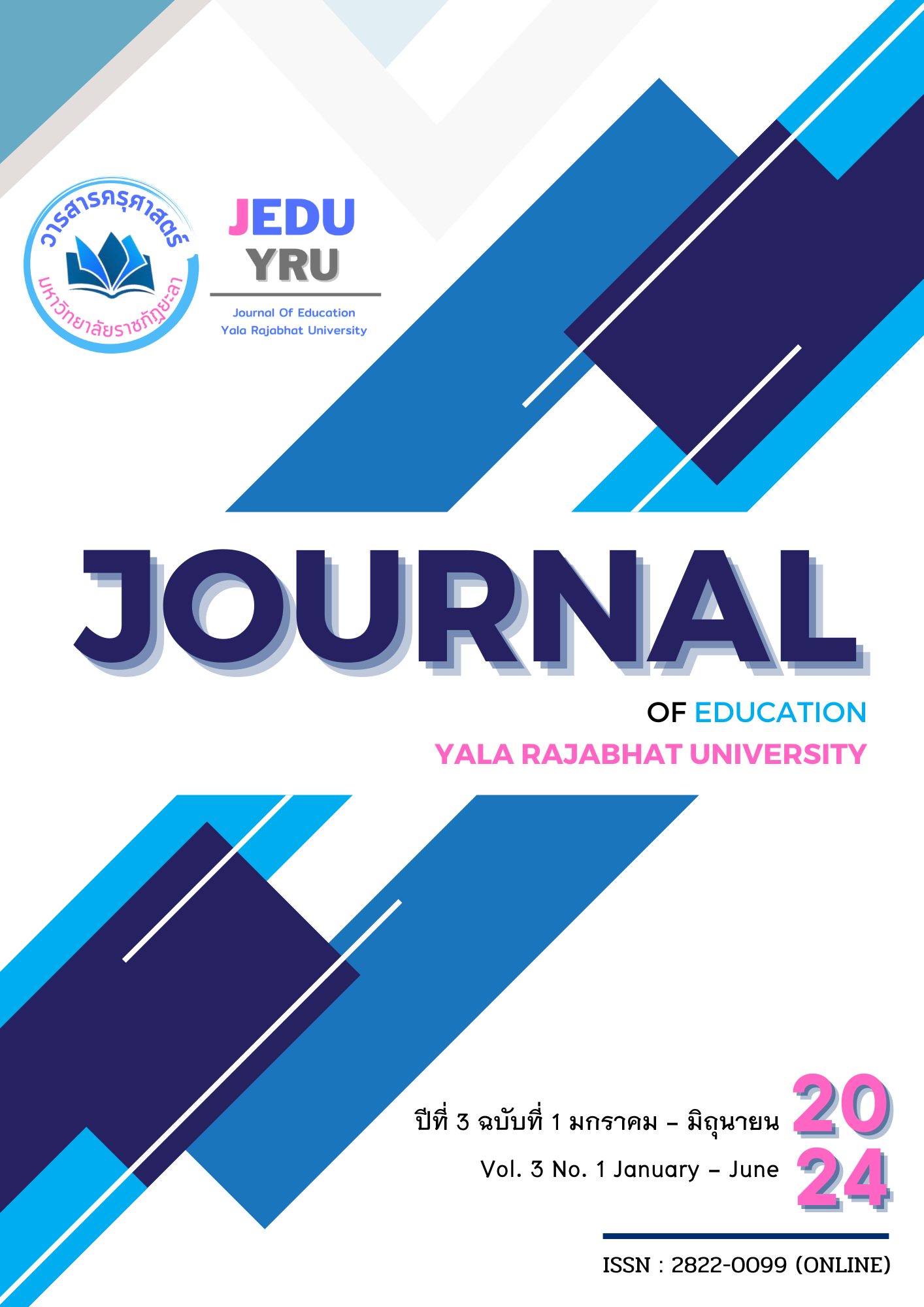Factors Effecting Difficulties in Learning Mathematics of Students in Primary and Upper Secondary Education Level
Main Article Content
Abstract
Mathematics is an important subject but learning mathematics is not easy for everyone. Mathematics, by nature, is the subject of symbols and have high abstraction. Learning mathematics needs to have concreteness in developing mathematics understanding. Some students have difficulties in learning mathematics and cannot solve math problems. What factors effecting difficulties in learning mathematics From studying selected articles, it showed that factors effecting difficulties in learning mathematics is the nature of mathematics itself, which is abstract. The way the content is presented was not consistent with child development, and a lack of practice.
Article Details
References
กระทรวงศึกษาธิการ. (2560). ตัวชี้วัดและสาระการเรียนรู้แกนกลาง กลุ่มสาระการเรียนรู้คณิตศาสตร์ (ฉบับปรับปรุง พ.ศ. 2560) ตามหลักสูตรแกนกลางการศึกษาขั้นพื้นฐาน พุทธศักราช 2551. กรุงเทพมหานคร: โรงพิมพ์ชุมนุมสหกรณ์การเกษตรแห่งประเทศไทย จำกัด.
มาลินี จุฑะรพ. (2539). จิตวิทยาการเรียนการสอน. พิมพ์ครั้งที่ 2. กรุงเทพมหานคร: ทิพย์วิสุทธิ์.
ปรียาพร วงศ์อนุตรโรจน์. (2551). จิตวิทยาการศึกษา. กรุงเทพมหานคร: ศูนย์สื่อเสริมกรุงเทพ.
พงษ์พันธ์ พงษ์โสภา. (2542). จิตวิทยาการศึกษา. กรุงเทพมหานคร: สำนักพิมพ์พัฒนาการศึกษา.
อัมพร ม้าคะนอง (2546). คณิตศาสตร์: การสอนและการเรียนรู้. กรุงเทพมหานคร: ศูนย์ตำราและเอกสารทางวิชาการคณะครุศาสตร์ จุฬาลงกรณ์มหาวิทยาลัย.
Acharya, B.R. (2017). Factors Affectiving Difficulties in Learning Mathematics by Mathematics Leaners. International Journal of Elementary Education, 6(2), 8-15.
Arenillo , S. A. & Arenillo , M. T.. (2013). Academic Dimensions of Student Performance across Class Size. IAMURE International Journal of Education, 7(1), 5-26.
Clarke, S., & Beck, J. (2023). Border disputes: Recent debates along the perception-Cognition border. Philosophy Compass, 18(10), 1-14.
Byrnes, J.P. (2001). Cognitive Development and Learning in Instructional Contexts. 2nded. Boston: Allyn and Bacon.
Byrnes, J.P. (1992). Categorizing and combining theories of cognitive development and learning. Educational Psychology Review, 4(3), 309–343.
Cambridge (2023). The Importance of Math in Science and Technology. Retrieved May 11, 2024, from : https://www.mathnasium.com/ca/math-centres/cambridge/news.
Cheng, Z. J. (2012). Teaching young children decomposition strategies to solve addition problems: An experimental study. The Journal of Mathematical Behavior, 31(1), 29–47.
English, L.D. and Halford, G.S. (1995). Mathematics Education: Models and Processes. Lawrence Erlbaum Associates: New Jersey.
Hecht, S. A. (1998). Toward an information-processing account of individual differences in fraction skills. Journal of Educational Psychology, 90(3), 545–559.
Hiebert, J. (1987). Decimal Fractions. The Arithmetic Teachers, 34(7), 22-23.
Hiebert, J. and Behr, M. (1988). Review of Research in Education 40(1), 497-528.
Hiebert, J. and Wearne, D. (1988). Instruction and cognitive change in mathematics. Educational Psychologist, 23(2), 105–117.
Islam, M.H (2015). Thorndike Theory and It’s Application in Learning. At-Ta’lim. Jurnal Pendidikan, 1(1), 37-47.
Leiss, D. S., Schukajlow S., Blum, W. , Messner, R., & Pekrun, R. (2010). The Role of the Situation Model in Mathematical Modelling-Task Analyses, Student Competencies, and Teacher Interventions. Journal für Mathematik-Didaktik, 31(1), 119-141.
Lewis, A. B. and Mayer, R. E. (1987). Students' miscomprehension of relational statements in arithmetic word problems. Journal of Educational Psychology, 79(4), 363-371.
Mitchelmore, M. C. and White, P. (2004). Abstraction In Mathematics and Mathematics Learning. Mathematics Education Research Journal. 19(2), 1-9.
Moss, J. and Case, T. (1999). Developing children’s understanding of the rational numbers: A new model and an experimental curriculum. Journal for Research in Mathematics Education, 30(2), 122-147.
Pólya, G. (1945). How to Solve It. Princeton and Oxford Princeton: University Press.
Ramya, K., Mani, N., & Karpagam, K. (2023). A Study on Learning Mathematics and Its Impact on Society Especially in Education and Suggested Solutions. European Chemical Bulletin Special Issue. 12(5), 7148- 7156.
Ranch, S. (2022). 5 Reasons Math is Important. Retrived May 26, 2024, from : https://www.mathnasium.com/math-centers/steinerranch/news.
Resnick, L. B. (1983). A developmental theory of number understanding. In H. Ginsburg (Ed.). The development of mathematical thinking. New York: Academic Press.
Resnick, L. B. (1987). Education and learning to think. Washington DC: National Academy Press.
Schunk, D. H. (2000). Learning Theories: an educational perspective. 3rd ed. New Jersey: Prentice-Hall.
Sophian, C. and Vong, K. I. (1995). The parts and wholes of arithmetic story problems: Developing knowledge in preschool years. Cognition and Instruction, 13(3), 469-477.
Turrou, A. C. and Franke, M. (2023). Make Sense of Problem Types. Retrived August 25, 2023, from : https://prekmath-te.stanford.edu/operations/making-sense-problem-types#1.
Wikipedia. (2024). Mathematics. Retrived May 22, 2024, from : https://en.wikipedia.org/wiki/Mathematics.
Yadav, D.K. (2017). Exact Definition of Mathematics. International Research Journal of Mathematics, Engineering, and IT, 4(1), 34-42.


